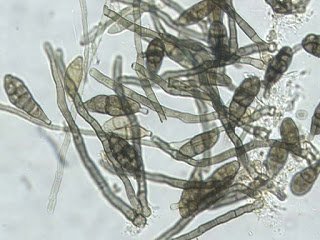Importance of seed borne diseases in Bangladesh
Bangladesh is an agro based country. The principal crops are Rice, Wheat, Jute, Potato, Sugarcane, Pulses, Oil seeds and different vegetables. Most are the crops are affected by seed borne diseases. In Bangladesh more than 400 seed borne diseases are recorded to attack 72 different crop plants. The plant pathogen like fungi, bacteria, viruses, nematode are responsible for this. Seed borne diseases cause enormous losses to crop every year in Bangladesh. The losses are occurred both in the field as well as in storage.
In field condition, sowing of the seeds attacked by seed borne diseases, creates failure of germination due to the activation of pathogens. As a result, the total crop losses occurred. If some healthy seeds are germinated, the other affected plants act as a source of infection for the healthy seedlings. Sometimes the virgin soil is attacked because some pathogens are able ubiquitous (both seed borne and soil borne). The crops which are attacked in the field condition due to seed borne diseases are described below
1)Rice: It suffers from 17 different seed borne diseases. In 1943, the Bengal famine was occurred due to the Brown spot of rice disease which is seed borne disease. The other seed borne rice diseases are blast, bakanae, stem rot etc. which sometimes cause enormous losses to rice crop.
2) Wheat: It is attacked by different seed borne diseases. e.g. Loose smut, Leaf blight, False smut, Seed gall (nemic disease) etc.
3) Jute: It has many seed borne disease but stem rot, anthracnose and mosaic of jute are most important. Every year, jute production are losses due to these disease.
4) Potato: The most important and damaging seed borne disease of potato are late blight (Phytopthora infestans), virus diseases (Leaf roll, Potato virus X, potato virus Y). In favourable weather condition, these disease can cause huge losses to potato [The greater Irish Famine was occurred due to the late blight of potato disease].
5) Sugarcane: Among the seed borne diseases of sugarcane, Red rot (Colletotrichum falcatum) and white leaf (mycoplasma) are most serious. At least 10% sugarcane production is affected due to this disease.
6) Pulses: Foot and root rot, Ascochyta blight etc. are main seed borne diseases.
7) Oil seeds: Alternaria of mustard, collar rot of sunflower, Tikka disease of groundnut, Anthracnose are main seed borne diseases in oil seed crops.
8) Vegetables: Major seed borne diseases in vegetable are bean anthracnose, rust, mosaic of okra, Fusarium wilt etc.
A rough estimate made in 1989 shows that annual loss of about tk. 900 crores is occurred due to different seed borne disease occurring only in field crops in Bangladesh.
9) In storage condition: Considerable losses also occur due to the invasion of seed borne microorganisms in storage condition. It has been found that species of Aspergillus and penicillium are responsible for the deterioration of stored seeds of rice, wheat, pulses, oil seeds and different vegetables crop. In the opinion of the experts, an average 24% of the total stored seeds are destroyed by the activities of storage fungi in the country. Approximately 10-15% of the total vegetatively propagated seeds used both for sowing and consumption are lost annually in storage due to seed borne diseases. Thousand tons of potato are lost in every year in storage condition due to dry rot (Fusarium spp.), black heart and storage disease.
